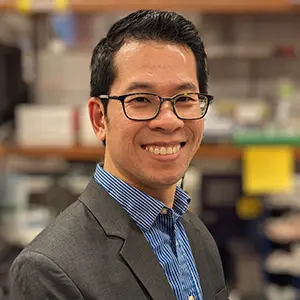March 14, 2024
@
12:00 PM
–
1:00 PM

Engineering 3D biomimetic models and vascular endothelial cells to investigate angiogenesis, cancer, and to support hepatic tissue functions
Duc-Huy T. Nguyen, PhD
Postdoctoral Associate
Department of Medicine
Weill Cornell Medical College
**Location – 2188 Mechanical Engineering**
Abstract:
The vasculature plays a critical role during embryogenesis and continues to regulate many essential biological processes of organs after birth. It delivers nutrients and gases to maintain tissue survival, transports biological wastes to appropriate organs for further processing, and enables the trafficking of immune cells to injured tissues. In tumors, the maladaptive vasculature invades the tumor tissues to fuel tumor growth and metastasis. Therefore, it is imperative to engineer biomimetic vascular models to investigate the multifaceted functions of the vasculature. In this talk, I will first discuss my work on engineering 3D biomimetic blood vessels to investigate the fundamental processes of blood vessel formation and utilize the biomimetic blood vessels to model the tumor-blood vessel interactions during pancreatic cancer invasion.
Recent advances in vascular biology reveal the crucial roles of endothelial cells (ECs) in supplying organ-specific cues to maintain organ functions in homeostasis. Consequently, adult ECs have been used to vascularize engineered organs and tissues to better mimic the biology of the organs. However, adult ECs lose their intrinsic ability in vitro to generate robust blood vessel networks and to interact and adapt to different cell types in co-culture, making them challenging to use in tissue engineering and translational applications.
To address this challenge, I will present my work on engineering adult ECs with transcriptional programming to empower adult ECs with a robust ability to form vascular networks and interact with other cells in co-culture. To demonstrate the utilities of the engineered adult ECs, I will also discuss my work on engineering a vascularized human liver model where the engineered ECs vascularize the liver tissue in microfluidic devices and support the function of primary human hepatocytes. Additional organs such as colon, pancreas, and bone marrow are also successfully vascularized in microfluidic devices by the engineered ECs.
Print PDF